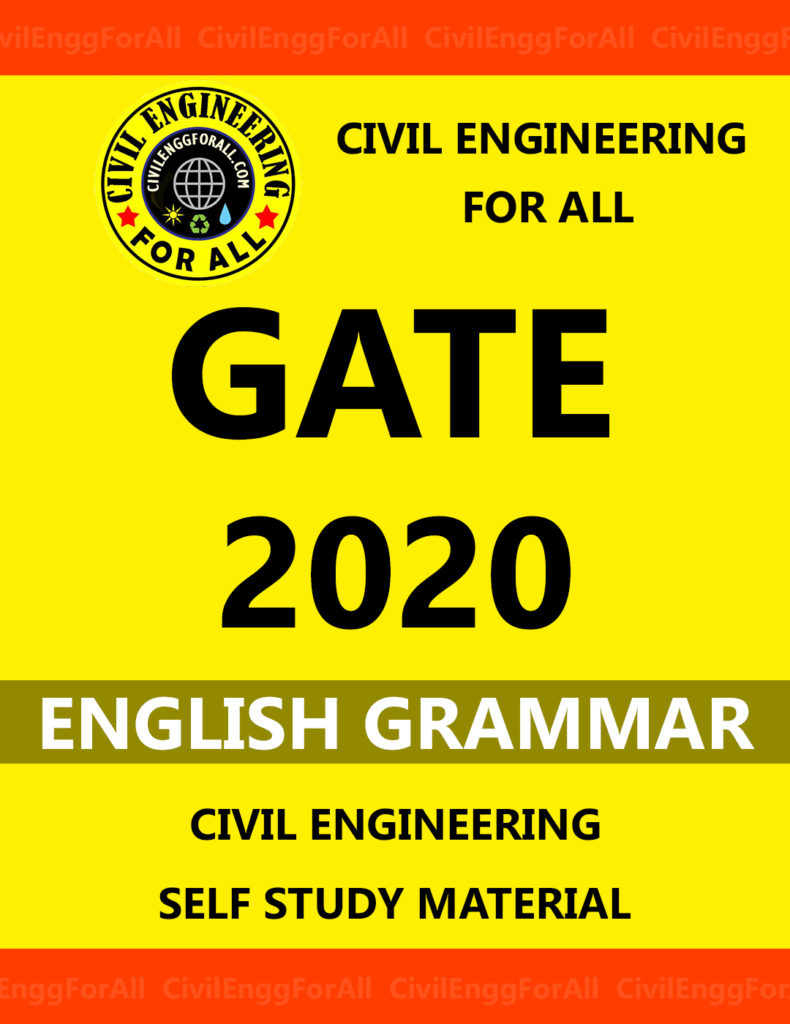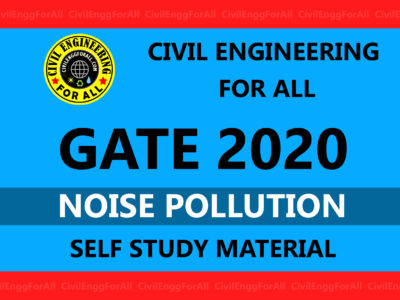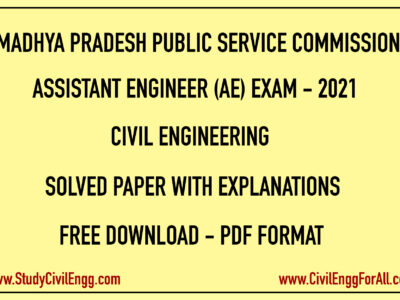
CONTENTS
- Errors in Use of Articles
- Use of ‘An’
- Use of ‘A’
- Use of ‘The’
- Errors in Use of Nouns
- Errors in Use of Pronouns
- Errors in Use of Prepositions
- Prepositions of Time
- Prepositions of Position
- Prepositions of Direction
- Other Uses of Preposition
- Words Followed by Prepositions
- Some Special Cases
- Errors in Use of Conjunctions
- Errors in Subject–verb Agreement
- Errors in the Use of Tenses
- Gerund & Infinitive
- Auxiliary Verbs
- Errors in Use of Adjectives
- Errors in Use of Adverbs
- Some More Tips of Usage
- Exercises, MCQ, Hints and Explanations


Use of ‘An’
- Before words beginning with vowel sounds [a, e, i, o, u are called vowels, others are consonants]. e.g. an apple, an egg, an owl.
- Before words beginning with silent ‘h’ but sounds as vowel. e.g. an hour, an honourable man, an heir, an honest man.
- F, H, L, M, N, R, S, X are letters that are not vowels but begin with vowel sound ‘M’ has the sound of ‘em’. So, ‘an’ is used before abbreviations beginning with vowels of these letters. e.g. an M.L.A., an R.A.F., an N.C.C. officer, an F.I.R., an X-ray, an H.E. school, an S.P.
Use of ‘A’
- In the sense of one. e.g. He couldn’t speak a word to save himself. With ‘one’ (since ‘one’ begins with sound of ‘w’) e.g. a one-man show, a one-rupee note.
- Before words beginning with consonant sound e.g. a boy, a box, a dog.
- With Vowel letters having consonant value. e.g. a university, a unique article, a euphenism, a unit, a European language
- With units and rate (per). e.g. He earns rupees five hundred a month.
- In exclamatory expressions before singular countable nouns. e.g. What a pretty girl!
- When two subjects or articles are thought of as a single unit. e.g. He was ready with a cup and saucer.
- With certain expressions of quantity. e.g. a lot of, a dozen, a great deal of, a couple.
- With a person’s name to indicate that the person is perhaps unknown to the person addressed. e.g. A Mr. roy is at the door.
- With a special meal (to celebrate something or in someone’s honour). e.g. I called my friends to a lunch to celebrate my success.
- To make a common noun of a proper noun. e.g. This man is ‘a second Newton’. (This phrase means ‘a philosopher as great as Newton’)
IES MASTER CIVIL ENGINEERING GATE STUDY MATERIALS PDF: DOWNLOAD LINK
ACE ACADEMY CIVIL ENGINEERING GATE STUDY MATERIALS PDF: DOWNLOAD LINK
Use of ‘The’
1. When we speak of a particular person or thing already referred to. e.g. I dislike the follow.
2. When a singular noun represents a whole class. e.g. The mango is considered the king among fruits.
3. With name of
- gulfs, rivers, oceans, islands and mountains e.g. the Himalayas, the Indian ocean, the Persian Gulf, the Red sea, the Andaman islands, the Brahmaputra river.
- Certain books e.g. the Vedas, the Puranas, the Bi bl e, the Ramacharitmanas.
- Musical instruments e.g. the flute, the violin, the table, the trumpet.
- The inventions e.g. I hate the telephone for its constant ringing.
- Parts of body e.g. He was wounded in the leg.
- Religious groups e.g. the Sikhs, the Hindus, the Parsees.
- Names enforcing law e.g. the Police, the Navy, the Air Force.
- Political parties e.g. the Congress, the Janata Party, the B.J.P.
- Aeroplanes, ships, trains etc e.g. the Makalu (aeroplane), the Vikrant (Ship), the Rajdhani express (train).
- Before names of an empire, dynasty or historical event e.g. the Gupta dynasty, the Old Stone Age, the First World War, the American Revolution.
- Clubs, foundations etc. e.g. the Lion’s Club, the Ford Foundation.
- Before common nouns denoting unique things e.g. the sun, the sky, the earth, the world.
- With superlatives e.g. He is the best boy in the class.
- With ordinals e.g. He took the first taxi that came his way.
- Before the comparative degree e.g. The more they get, the more they want.
- Before an adjective when the noun is understood e.g. The poor would favour him.
ERRORS IN USE OF NOUNS
Nouns which are used in singular form
- Scenery, information, furniture, advice, machinery, stationery, news, poetry, business, mischief, fuel, issue, repair, bedding. e.g. The scenery of this place is worth seeing.
- Physics, Mathematics, Economics, Classics, Ethics, Athletics, innings, gallows. e.g. Economics is a very interesting subject.
- Brick, bread, fruit, word (as ‘promise’) e.g. Let me buy some fruit.
- Words like dozen, score, hundred, thousand, million when preceded by a numeral. e.g. He bought ten dozen oranges.
- Expressions as a ten-rupee note, a two-hour journey, a four-mile walk, a Five-year plan, a six-man committee etc. e.g. A ten-rupee note is lying there.
Nouns used only in plural form
- Cattle, police, poultry, people, gentry, peasantry, artillery. e.g. The police have caught the thief.
- Scissors, trousers, stockings, spectacles, shorts, alms, remains, riches, goods, measles. e.g. My scissors are very sharp.
Nouns used both as singular and plural in the same form
- Dear, sheep, fish, apparatus, wages. e.g. The wages of sin is death. The wages of the workers have been raised. I saw a sheep grazing in the field. Sheep are sold cheaper than goat.
- Collective nouns as jury, public, team, audience, committee, government, audience, congregation, orchestra. e.g. The team are looking quite fit. The team has not turned up yet.
ACE ACADEMY CIVIL ENGINEERING GATE HANDWRITTEN CLASSROOM NOTES PDF: DOWNLOAD LINK
MADE EASY CIVIL ENGINEERING GATE HANDWRITTEN CLASSROOM NOTES PDF: DOWNLOAD LINK
Use of Collective Nouns
- crowd of people
- mob of angry people
- herd of cattle/cows
- fleet of ships/cruisers
- team of players
- pack of wolves
- flight of birds
- pack of cards
- bouquet of flowers
- loaf of bread
- Shoal/school of fish
- heap of corn
- bundle of sticks
- stock of grain
- army of soldiers
- class of pupils
- flock of sheep
- bunch of grapes
- crew of sailors
- herd of lions
- swarm of bees
- pile of books
- garland of beads
- horde of nomads
- gang of thieves
- block of flats
- library of books
- file of papers
One of or any of is followed by plural words. e.g. I want one of the book s kept on the table. Any of these tool s may serve the purpose.
Plural nouns are used with fractions and decimal over 1. e.g. It took us one and a half hour s.
Errors in use of pronouns
Pronouns are words used to replace nouns or noun groups already mentioned.

- The pronoun ‘One’ must be followed by ‘one’s’. e.g. One must do one’s duty to one’s country.
- When ‘one’ means ‘one in number’, the pronoun for it is third person singular pronoun (he, she, it). e.g. One of them has given up one’s studies. (x) One of them has given up his studies. (correct)
- ‘Everyone’ or ‘Everybody’ must be followed by ‘his’. e.g. Everyone should love his country.
- Each, every, anyone, anybody must be followed by the singular pronoun of their person. e.g. Anyone can do this if he tries.
- ‘Let’ is followed by pronoun in the objective case. e.g. Let him go.
- ‘But’ and ‘except’ are followed by pronoun in the objective case. e.g. Everyone attended the party except him. ‘such as’ is followed by pronoun in the subjective case. e.g. I have no liking for such a man as he.
- Verbs like enjoy, avail, pride, resign, apply, acquit, assert, absent are followed by reflexive pronouns. e.g. He absented himself from the class. We enjoyed ourselves at the party.
- Reflexive pronouns are never used with verbs keep, conceal, quality, spread, rest, stay. e.g. I stayed away from my class. He qualified in the test.
- When first, second and third person singular pronouns (I, you and He) are used together, they are placed in the order: You, he and I. e.g. You he and I are neighbours. In case of plural pronouns, ‘we’ comes first, then ‘you’ and then ‘they’. e.g. We, you and they must work together. But if we have only two persons including first, then first person pronoun is written first. e.g. I and Sanjeev have done this job.
- ‘Who’ denotes subject and ‘whom’ denotes object. e.g. Who do you think did the job?
- ‘Whose’ is used for persons and ‘which’ for lifeless objects. e.g. This is the table which I was talking about.
- ‘Which’ conveys additional information and ‘that’ explains a certain thing. e.g. I will tell you the first thing which I remember.
- The following expressions usually take ‘that’ in place of ‘who’ or ‘which’. Only, Any, It is, All, Superlatives. e.g. He is the only man that can do it. Any man that listens to you is a fool.
- ‘Each other’ is used for two; ‘one another’ for more than two. e.g. Rahul and Renu love each other.
- The complement of the verb to be, when it is expressed by a pronoun, should be in Nominative case. e.g. It was he who did it.
- When the same person is the subject and object, it is necessary to use reflexive pronouns. e.g. I cut me shaving this morning. (×) I cut myself shaving this morning. (correct)
- When a pronoun is the object of a verb or preposition it should be in objective case. e.g. These books are for you and I. (×) These books are for you and me. (correct) Between him and me there is an understanding.
- The Relative Pronoun should be placed as near as possible to the antecedent. e.g. I have read Shakespeare’s works who was a great dramatist. (×) I have read the works of Shakespeare who was a great dramatist.(correct)
- The case of the pronoun following ‘than’ and ‘as’ is decided by mentally supplying the verb and completing the sentence. e.g. She is taller than I (am) I love more than (I love) him.
RRB JE CIVIL ENGINEERING STUDY MATERIALS PDF: CLICK HERE
SSC JE CIVIL ENGINEERING STUDY MATERIALS PDF: CLICK HERE
ERRORS IN USE OF PREPOSITIONS
A preposition is a word used with a noun or pronoun to show its relation to some other word in a sentence.
PREPOSITIONS OF TIME
- At is used (a) with a definite point of time e.g. I usually get up at 5 o’clock. (b) with festivals e.g. He will come at Holi.
- I n is used: (a) with the parts of the day, (with noon, use at), months, seasons and years e.g. He takes a walk in the afternoon. (b) with the future tense referring to the period in which action may take place e.g. You must be careful in future.
- On is used: with days and dates e.g. My brother will arrive on Monday.
- By refers to the latest time at which an action will be over e.g. The examination will be over by 5 p.m.
- For is used with perfect continuous tense showing the duration of action e.g. I have been here for three years.
- Since is used with the point of time when action begins and continues: e.g. He has been ill since last Tuesday.
- From refers to the starting point of action. e.g. This water came from a spring.
PREPOSITIONS OF POSITION
- At refers to an exact point. e.g. The tourist stayed at the Tourist Hotel. He studied at Oxford.
- In refers to larger areas. e.g. He lives in Bombay.
- Between is used for two persons or two things. e.g. Share these sweets between him and me.
- Among is used with more than two persons or things but before the word which starts with a consonant letter. e.g. Divide the sweets among the three boys.
- Amongst is also used with more than two persons or things but before the word which starts with a vowel letter. e.g. Divide the sweets amongst us.
- Above is used for higher than. e.g. The sun rose above the horizon.
- Under is used for vertically below. e.g. It is shady under the trees.
- Below is used for lower than. e.g. When the sun sets it goes below the horizon.
- Over is used for vertically above. e.g. There is an aircraft coming over.
- Beneath means a lower position. e.g. the ground was slippery beneath her.
PREPOSITIONS OF DIRECTION
- To is used to express motion from one place to another. e.g. We walked to the river and back.
- Towards refers to direction. e.g. He saw me running towards him.
- I n t o denotes motion towards the inside of something. e.g. She fell into a ditch.
- At refers to aim. e.g. He aimed at the bird.
- For denotes direction. e.g. I will leave for Pune today.
- Against shows pressure. e.g. She cleaned the edge of her knife against the plate.
- Off refers to separation. e.g. He was wiping sweat off his face.
- From refers to the point of departure. e.g. The man parted from his friends.
OTHER USES OF PREPOSITION
- About shows nearness. e.g. His father is about to retire.
- Along stands for i n t he same li ne. e.g. She led them along the corridor.
- After refers to sequence. e.g. She came after me.
- Across means from one side. e.g. He blew a cloud of smoke across the table.
- Before stands for in front of. e.g. A thief was brought before the judge.
- Behind means at the back of. e.g. She sat down behind the hedge.
- Beyond means on the farther side of. e.g. This is beyond his power.
- Beside means by the side of. e.g. I sat down beside my wife.
- Besides means in addition to. e.g. He is guilty of five killings and more besides.
ENGLISH GRAMMAR GATE 2020 STUDY MATERIAL FREE DOWNLOAD PDF
DOWNLOAD LINK : CLICK HERE
PASSWORD : CivilEnggForAll
OTHER USEFUL BOOKS
- CIVIL ENGINEERING TEXTBOOKS WITH DOWNLOAD LINKS
- IES MASTER CIVIL ENGINEERING GATE STUDY MATERIALS PDF
- ACE ACADEMY CIVIL ENGINEERING GATE STUDY MATERIALS PDF
- RAJASTHAN STAFF SELECTION BOARD (RSSB) JUNIOR ENGINEER DIPLOMA CIVIL ENGINEERING EXAM 2022 – HINDI & ENGLISH MEDIUM SOLVED PAPER – FREE DOWNLOAD PDF (CivilEnggForAll.com)
- ISRO TECHNICAL ASSISTANT EXAM 2022 – CIVIL ENGINEERING – HINDI & ENGLISH MEDIUM – SOLVED PAPER – FREE DOWNLOAD PDF (CivilEnggForAll.com)
- MADHYA PRADESH PUBLIC SERVICE (MPPSC) COMMISSION – ASSISTANT ENGINEER EXAM – MPPSC AE 2021 CIVIL ENGINEERING – SOLVED PAPER WITH EXPLANATIONS – PDF FREE DOWNLOAD
- BIHAR PUBLIC SERVICE COMMISSION (BPSC) ASSISTANT ENGINEER EXAM – 2022 – CIVIL ENGINEERING – SOLVED PAPER – FREE DOWNLOAD PDF (CivilEnggForAll.com)
- ODISHA PUBLIC SERVICE COMMISSION – OPSC AEE PANCHAYATI RAJ EXAM 2021 – SOLVED PAPER WITH EXPLANATION – FREE DOWNLOAD PDF





















